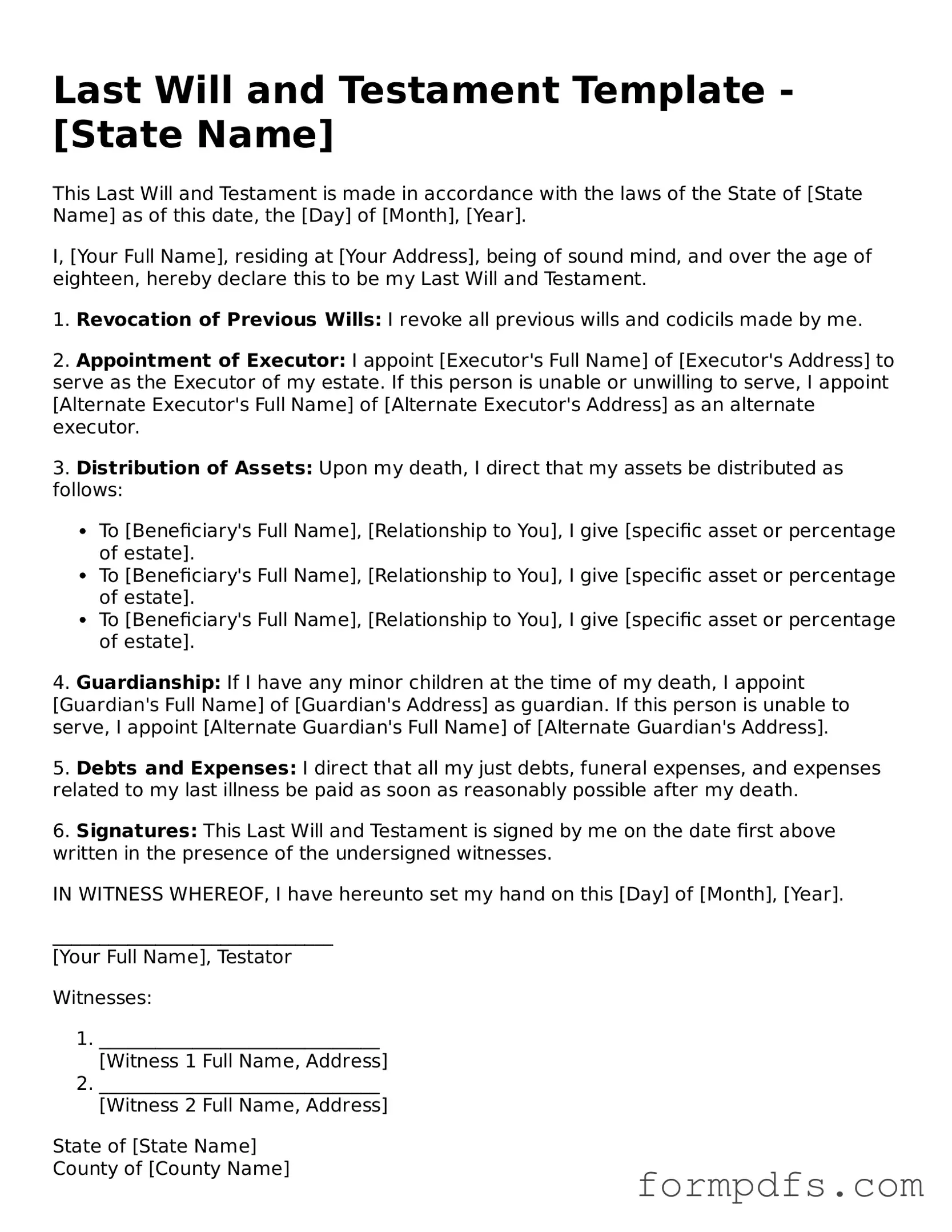What is a Last Will and Testament?
A Last Will and Testament is a legal document that outlines how a person's assets and affairs should be handled after their death. It specifies who will inherit property, appoints guardians for minor children, and can even name an executor to manage the estate. This document serves as a crucial tool for ensuring that an individual's wishes are honored and can help prevent disputes among family members after passing.
Who can create a Last Will and Testament?
Generally, any adult who is of sound mind can create a Last Will and Testament. This typically means being at least 18 years old and capable of understanding the implications of the document. Individuals should be clear about their intentions and the distribution of their assets. Some states may have specific requirements regarding mental capacity or the formalities of signing the will.
What happens if someone dies without a Last Will and Testament?
When a person dies without a Last Will and Testament, they are said to have died "intestate." In such cases, state laws dictate how the deceased's assets will be distributed. This process can lead to outcomes that may not align with the deceased's wishes. It can also result in delays and additional costs, as the court may need to appoint an administrator to manage the estate.
Can a Last Will and Testament be changed or revoked?
Yes, a Last Will and Testament can be changed or revoked at any time while the individual is alive, as long as they have the mental capacity to do so. This can be accomplished by creating a new will or by making a codicil, which is an amendment to the existing will. It is important to follow legal formalities when making changes to ensure that the new document is valid and enforceable.
Do I need a lawyer to create a Last Will and Testament?
While it is not strictly necessary to hire a lawyer to create a Last Will and Testament, consulting with one can be beneficial. A lawyer can provide guidance on state-specific laws, help ensure that the will is properly drafted, and address any unique circumstances that may arise. For straightforward estates, individuals may choose to use online resources or templates, but caution is advised to avoid potential legal pitfalls.
What should I include in my Last Will and Testament?
In a Last Will and Testament, individuals should include several key components. First, clearly identify yourself and state that the document is your will. Next, specify how your assets should be distributed, naming beneficiaries and detailing what they will receive. If applicable, appoint a guardian for minor children and designate an executor to manage the estate. Lastly, include a statement revoking any prior wills to avoid confusion.
